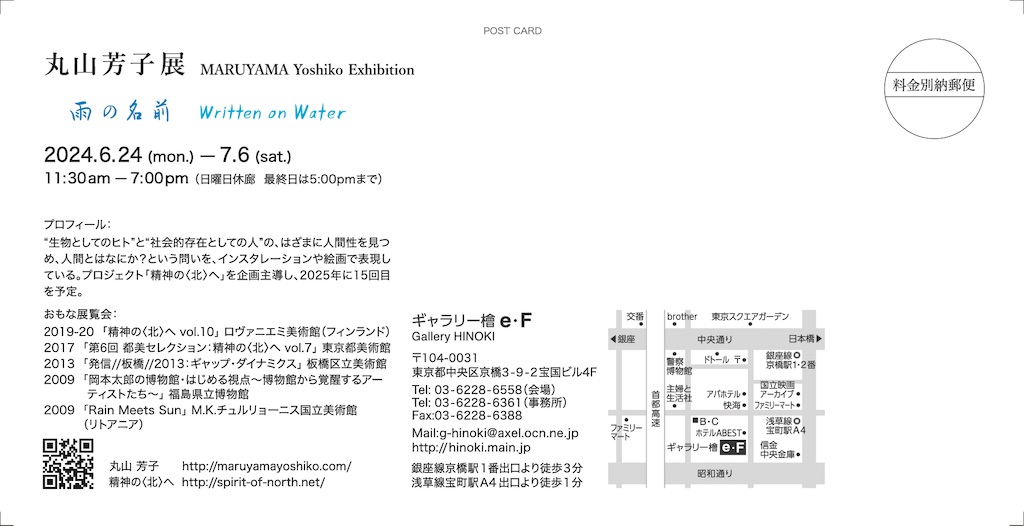Solo Exhibition [Written on Water]
Since ancient times, humans have found myriad expressions for weather phenomena, such as rain and clouds. Japanese is said to have more than 400 words for rain. The names that describe the subtle differences of water droplets falling from the sky can be perceived as expressions symbolizing what it means to be human.
Meanwhile, rain, as a phenomenon, dynamically cycles between the Earth’s surface and the atmosphere, transitioning from rain to groundwater, spring water, rivers, seas, water vapor, clouds, and back to rain again. We, as living beings, exist within this cycle and sustain life through water.
What would we see if we viewed the Earth’s surface through the lens of water droplets falling from the clouds? What are the various phenomena of water in a cycle? When we envision this, what we hear from the substance has nothing to do with the names given by humans, but rather the voices that speak: “I am, I am…”
As a native of Fukushima, the great earthquake that struck Tohoku in 2011 was a profound turning point in my life that not only reshaped my view of life but also redefined my artistic intent. It led me to pursue my “Spirit of North” project, which I started soon after to explore the resonance between the people of Tohoku and the northern peoples of the world.
Natural disasters continue to occur all over the globe, leaving humans to feel vulnerable and small. But human beings are intellectual creatures who contemplate the universe and strive to understand the bigger picture. Rather than killing one another out of a desire to conquer, humans should use their intellect to navigate disaster and unknown viruses, while adapting to the Earth’s phenomena.
How can we exist in harmony with all other beings and lead our lives as humans? In my view, we are thinking reeds, each confronting the folly and absurdity of the human world. Through small acts of integrity, we can think, act, and make steady progress.

Invitation Card of the Solo Exhibition 2024

Information of the Solo Exhibition 2024
